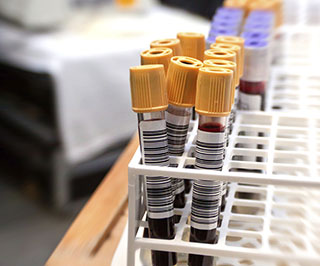 Image credit: Martynasfoto/Thinkstock
Image credit: Martynasfoto/Thinkstock
An investigation by the Milwaukee Journal Sentinel determined that many U.S. laboratories aren’t following basic protocols to ensure accurate test results, putting patient health at risk.
Anywhere from 7 billion to 10 billion lab tests are conducted in the United States annually. Medical decisions are often based on the results of these tests, which means that “even a small error rate affects millions of patients,” the Journal Sentinel reported in an article that discussed the findings of the investigation.
Weak oversight is to blame for many of these lab failures, the investigation determined. The Journal Sentinel found that lab inspections also may not be detecting problems or sanctioning labs with problems.
“Even when serious violations are identified, offending labs are rarely sanctioned except in the most extreme cases. In 2013, just 90 sanctions were issued—accounting for not even 1% of the 35,000 labs that do high-level lab testing in the United States,” the article stated.
These labs conduct "moderate-to-high-complexity" testing. To ensure that they meet an extensive list of federal mandates, labs must undergo inspections once every 2 years.
According to the article, accrediting organizations that monitor labs on the federal government’s behalf can keep inspection reports private. “In fact, federal law requires it in most cases. When state and federal inspection records exist, they can be difficult and time-consuming to get. The Journal Sentinel has spent months battling for records to ascertain what is happening in labs across the country,” the article stated.
Lab testing can go wrong in a number of ways, according to the Journal Sentinel. Samples may be improperly collected or labeled—or maintained improperly after collection. Sometimes lab equipment is at fault due to wear and tear, or an instrument loses calibration from a temperature shift or an electrical surge. Other culprits involve expired reagents or failure to read a test in a timely manner.
The article provided advice on how patients could protect themselves against such errors:
- Before collecting the sample, make sure the label contains your name and other identifying information;
- Go to a different lab for a second opinion if you know a lab result is incorrect; and
- Contact state health officials with any complaint—they follow up on these issues on behalf of federal regulators.
“Patients can ask state health agencies if complaints have been filed against a particular lab and for a copy of inspection reports. However, many labs are inspected by accrediting groups, so there won’t be any reports, as those records are private,” the article stated.
“AACC members have been discussing the Journal Sentinel’s findings on AACC Artery, our members-only online community.
“More information about AACC Artery and other AACC member benefits is available online.